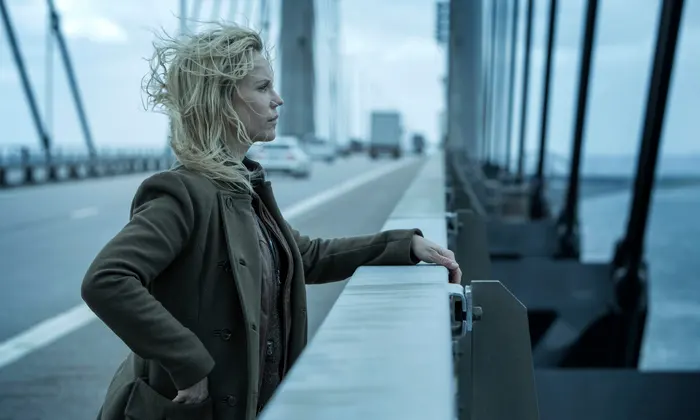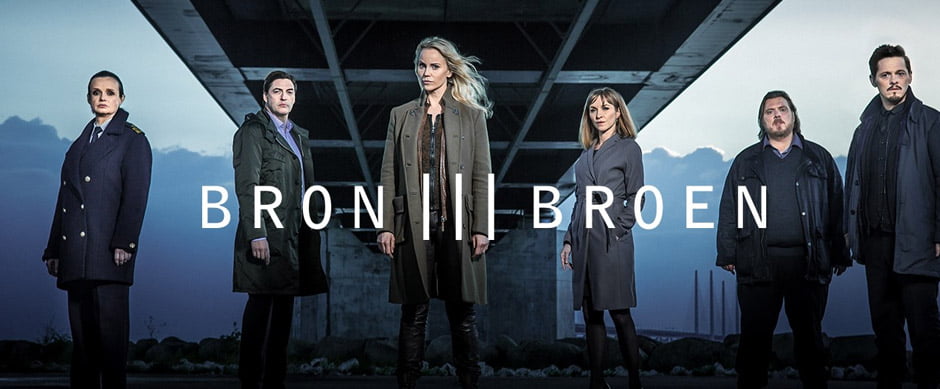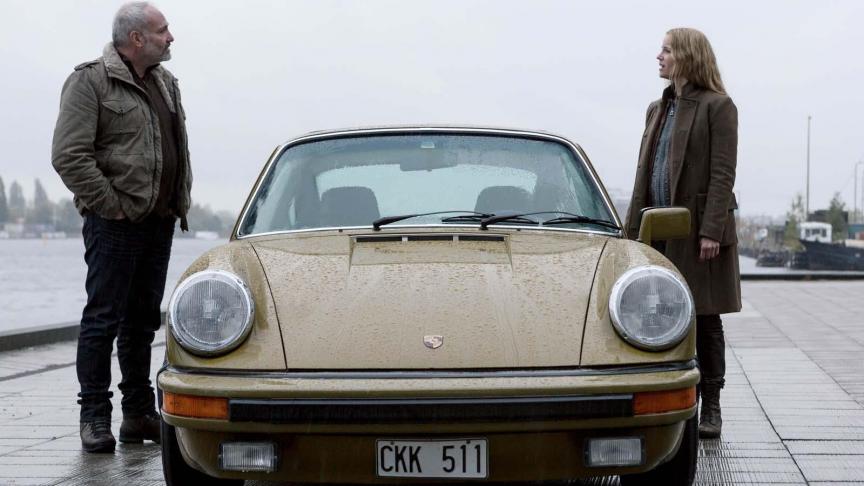Scandinavian noir has emerged as a distinguished genre in contemporary television, blending elements of crime, drama, and a somber, introspective aesthetic. One of the most notable contributions to this genre is the critically acclaimed TV series The Bridge (Bron/Broen), a joint Swedish-Danish production that premiered in 2011. Set against the backdrop of the Øresund Bridge, which connects Sweden and Denmark, the series follows the collaboration between Swedish detective Saga Norén and her Danish counterpart, Martin Rohde, as they solve crimes that straddle their respective countries.
While The Bridge captivates audiences with its intricate plots and atmospheric settings, it also provides a nuanced exploration of several significant social issues. This article delves into three major aspects of the series: the treatment of women in the police department, the representation of women in everyday life, and the portrayal of Asperger’s Syndrome through the character of Saga Norén. By examining these elements, we can gain a deeper understanding of how The Bridge reflects and challenges societal norms and prejudices.

Women in Law Enforcement: Breaking the Glass Ceiling
Gender Dynamics in the Police Department
The Bridge presents a complex and often stark portrayal of women in law enforcement. Saga Norén, the series’ protagonist, is a striking example of a woman who defies conventional gender roles within a traditionally male-dominated profession. Her character is a senior detective with the Malmö County Police, known for her exceptional skills and unyielding dedication to her work. However, Saga’s professional environment is not devoid of the challenges that women face in such settings.
Throughout the series, Saga’s competence and authority are frequently tested by her male colleagues. Despite her impressive track record, she often encounters skepticism and resistance, highlighting the pervasive gender biases that still exist within the police force. These interactions underscore the notion that women must continuously prove their worth, often working harder than their male counterparts to gain the same level of respect and recognition.
Saga Norén: A Paradox of Strength and Vulnerability
Saga Norén’s character is emblematic of a new kind of female protagonist in crime drama. She is portrayed as fiercely independent, highly intelligent, and unapologetically focused on her career. Yet, she also embodies a vulnerability that is seldom seen in male characters in similar roles. Saga’s struggles with social interactions and emotional expression add layers to her character, making her both relatable and compelling.
Saga’s atypical behavior is not merely a narrative device; it serves to challenge traditional gender expectations. Her directness and lack of concern for social niceties often put her at odds with her peers, but they also emphasize her integrity and commitment to justice. In a profession where emotional detachment and toughness are often equated with competence, Saga’s character demonstrates that strength can manifest in diverse and unconventional ways.


Women in Everyday Life: Reflections of Society
Portrayal of Female Characters
Beyond the precinct, The Bridge offers a broader commentary on the roles and experiences of women in Scandinavian society. The series presents a variety of female characters, each with their own unique challenges and narratives. These characters are not mere adjuncts to the male leads; they are integral to the storyline and are portrayed with depth and complexity.
For instance, Charlotte Söringer, a wealthy and influential woman, navigates the intricacies of power and corruption, shedding light on the ways in which women maneuver within the upper echelons of society. Similarly, Mette Rohde, Martin’s wife, represents the everyday struggles of balancing career aspirations with family responsibilities. Her character’s journey underscores the persistent societal expectations placed on women to fulfill traditional roles, even as they strive for personal and professional fulfillment.
Societal Expectations and Pressures
The series does not shy away from depicting the societal pressures faced by women. Whether it is the pressure to conform to certain beauty standards, the expectation to prioritize family over career, or the scrutiny that comes with being in the public eye, The Bridge captures the multifaceted dimensions of women’s lives. These portrayals serve as a microcosm of the broader societal dynamics at play, reflecting the ongoing tension between progress and tradition in contemporary Scandinavia.
One poignant example is the character of Pernille Lindegaard, a journalist whose investigation into corruption and crime places her in danger. Pernille’s determination and courage highlight the challenges faced by women in male-dominated fields such as journalism, where they must contend with threats to their safety and credibility. Her character arc emphasizes the resilience and fortitude required to challenge entrenched power structures and bring about change.

Representation of Asperger’s Syndrome: Saga Norén’s Unique Perspective
Depiction of Asperger’s Syndrome
One of the most distinctive aspects of The Bridge is its portrayal of Asperger’s Syndrome through the character of Saga Norén. While the series does not explicitly label Saga as having Asperger’s, her behaviors and characteristics align closely with the condition. This nuanced portrayal offers a rare and insightful representation of neurodiversity on mainstream television.
Saga’s meticulous attention to detail, her difficulty with social cues, and her preference for routine are all indicative of Asperger’s Syndrome. The series treats these traits with a level of sensitivity and respect that is often lacking in other media portrayals. Rather than reducing Saga to a stereotype or using her condition as a plot device, The Bridge presents her as a fully realized character whose neurodiversity is just one aspect of her identity.
Challenges and Strengths
Saga’s condition presents both challenges and strengths in her role as a detective. Her inability to empathize in the conventional sense often leads to friction with colleagues and suspects, yet it also allows her to approach cases with a level of objectivity and precision that proves invaluable. This duality is a recurring theme in the series, highlighting how traits associated with Asperger’s can be both a hindrance and a unique advantage.
Moreover, Saga’s interactions with those around her provide a lens through which the series explores broader societal attitudes towards neurodiversity. Her colleagues’ varied responses to her behavior—from frustration and misunderstanding to acceptance and appreciation—reflect the complexities of integrating individuals with different neurological profiles into mainstream settings. Through Saga, The Bridge advocates for a more inclusive and empathetic approach to neurodiversity, emphasizing the importance of understanding and accommodation.
Humanizing Neurodiversity
Perhaps the most significant contribution of Saga Norén’s character is the way she humanizes neurodiversity. By presenting a character who is both flawed and exceptional, the series challenges viewers to reconsider their preconceptions about Asperger’s Syndrome. Saga is not defined by her condition; she is a multifaceted individual whose experiences and actions resonate on a universal level.
The portrayal of Saga also underscores the value of representation in media. By including a character with Asperger’s in a leading role, The Bridge broadens the scope of narratives available to audiences and provides a platform for greater awareness and understanding. This representation is crucial in fostering a more inclusive society where neurodiversity is recognized and respected.


Scandinavian Noir at its best
The Bridge is a masterful blend of crime drama and social commentary, offering a rich and textured exploration of contemporary Scandinavian society. Through its portrayal of women in law enforcement, everyday life, and its sensitive depiction of Asperger’s Syndrome, the series transcends the conventions of the genre to address pressing social issues with depth and nuance.
Saga Norén stands out as a revolutionary character who defies traditional gender roles and challenges societal norms through her unique perspective and unwavering commitment to justice. The series’ portrayal of female characters in various walks of life highlights the persistent struggles and triumphs of women in a rapidly evolving society. Furthermore, the representation of Asperger’s Syndrome through Saga provides a much-needed lens into the experiences of neurodiverse individuals, advocating for greater understanding and acceptance.
Ultimately, The Bridge is not just a gripping crime thriller; it is a thought-provoking narrative that invites viewers to reflect on the complexities of identity, gender, and neurodiversity. Its success lies in its ability to weave these themes seamlessly into its storytelling, creating a series that is as intellectually stimulating as it is emotionally resonant. In doing so, The Bridge sets a high standard for future productions in the genre and continues to inspire conversations about the social issues it so deftly addresses.









